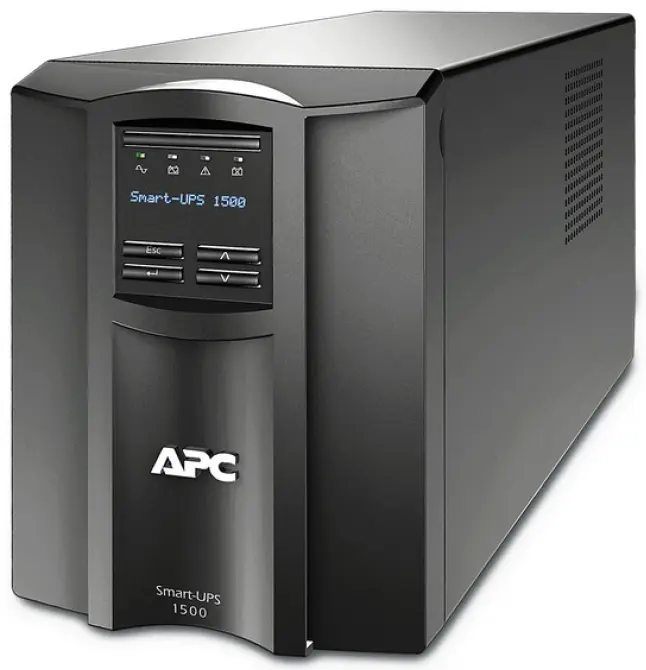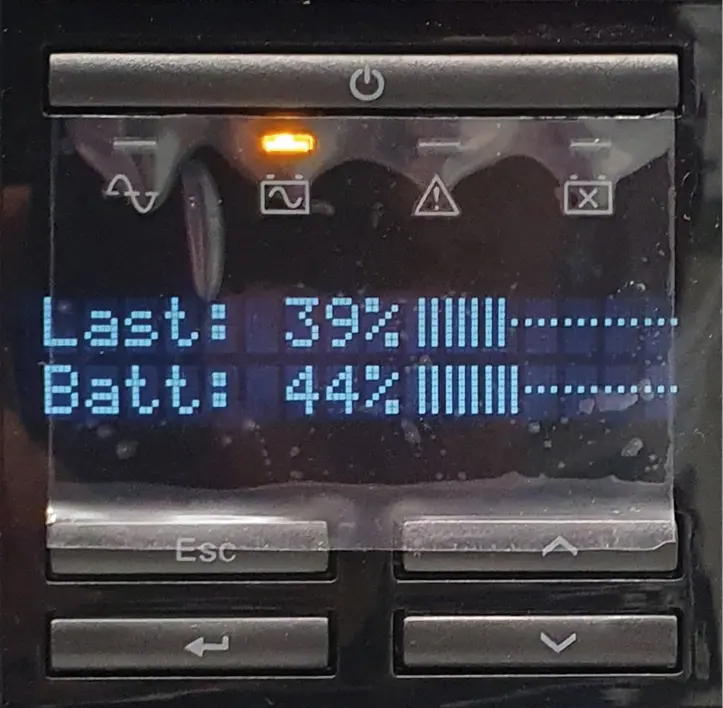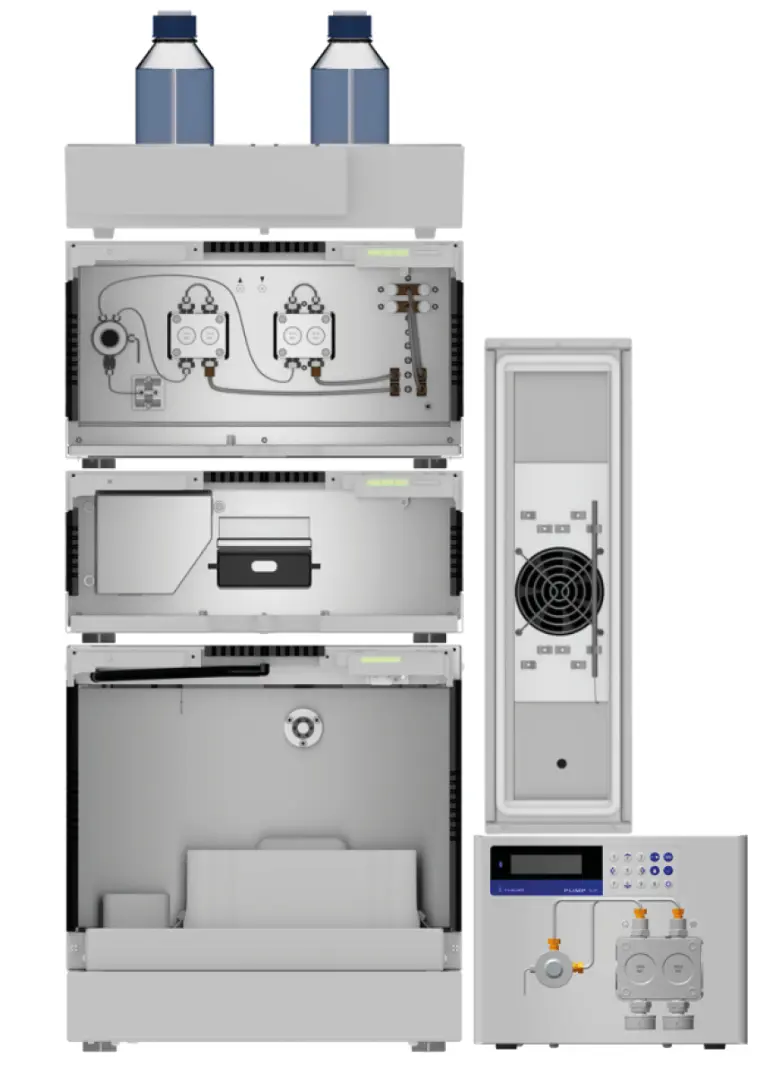
Science with Passion
Application No.: VTN0027 Version 1 04/2023
Uninterruptible Power Supply – UPS for a safe and stable operation of the KNAUER AZURA® (U)HPLC systems
Matthias Grothe, Juliane Kramer, Dinah Noa Fischer, Giorgia Greco; applications@knauer.net
KNAUER Wissenschaftliche Geräte GmbH, Hegauer Weg 38, 14163 Berlin

Collage: KNAUER
Summary
A stable power supply is essential for the safe and continuous operation of an HPLC system. When this cannot be guaranteed via the public power grid, it is recommended to compensate possible power failures with an uninterruptible power supply (UPS). The use of a UPS helps to avoid uncontrolled shut-down of the HPLC system and the PC in the event of a power failure and therefore helps to prevent a loss of data. Here, we showed that an APC Smart-UPS 1 500 VA devices helps to bridge 46 min time under typical HPLC operating conditions, and up to 17 min with the addition of a preparative LC pump.
Introduction
A UPS, or battery backup, provides backup power when your regular power source fails, or voltage drops to an unacceptable level. It delivers constant, pure sine wave power and, connected to an HPLC system, avoids instrumental damage or data loss due to electrical shock when analysis is still running. Knowing the benefits of a UPS device, the main question to answer is the bridged power failure time that a UPS device will really cover under typical HPLC usage conditions. The bridgeable power failure time can be calculated from the maximum power requirement of the HPLC system (this information is available on the Pre-Installation Guide) in relation to the capacity of the UPS. However, since the power requirements of the devices depend on their usage, the bridged power failure time of a KNAUER AZURA (U)HPLC system was measured under typical usage conditions connected to an APC Smart-UPS 1500 VA. We investigated the loading process of the UPS’ battery to 100 %, when it is connected to a running HPLC system. Furthermore, we tested the influence of a higher power load, e.g. by an additional device like a preparative pump, on the bridging time.

Fig. 1 APC Smart-UPS 1 500 VA used for the experiments
Results and test conditions
A KNAUER (U)HPLC system configuration equipped with pump, autosampler, column thermostat, detector, and personal computer was used. All components were connected to the uninterruptable power supply. Three different parameter setups were set for the devices to simulate different power loads. The used UPS supports a load of 1 000 W (= 100 %).
Tab. 1 Method parameters, *used with setup 3 only
Device | Description |
Pump 1 | 0.5 ml/min |
Pump 2* | 900 ml/min |
Autosampler | partial loop injection, 5° C tray temperature |
Thermostat | 70° C |
Detector | deuterium and halogen lamp switched on |
The system ran in a sequence with 4 min long runs over the full time. The battery of the UPS was fully charged before the begin of the test.
Setup 1 – UPS with HPLC
Running the system with the described method (Tab. 1) from 100 % to 0 % battery load of the UPS. While the load of the HPLC system was about 30 % (about 300 W) of the maximum load for the UPS (1 000 W), the system ran 46 minutes until the UPS battery was completely discharged.

Fig. 2 Exemplary figure of UPS display showing the load from the system (Last) and the current charge status of the battery (Batt)
Setup 2 – Charging time
How long will it take to charge the battery from the UPS from 0 to 100 %? Does a connected, running HPLC system affect this? As known from other devices, as smartphones, the loading curve flattens out strongly at the end. While 50 % of the battery capacity was reached after 1 hour, it took another 3 hours to achieve a charge or 97 %. 100 % charge was achieved after 2 additional hours. It was figured out that the charging time was the same, regardless of whether the HPLC was switched off or was running while the battery was charged.
Setup 3 – UPS with HPLC stack and additional preparative LC pump
Having in mind that a higher load will unload a battery non-linear, an additional device was added to increase the power load and check, how this influences the bridging time. A KNAUER BlueShadow 80P pump was added. The flow rate was set to 900 ml/min which resulted in a backpressure of 45 bar. The 80P increases the system load to about 44 % (about 440 W). The UPS’ battery was discharged after 17:40 min. This confirmed the assumptions about the non-linear discharging behaviour. According to the result of the test with setup 1, the runtime should otherwise have been around 30 minutes.
Conclusion
The use of a UPS helps to avoid uncontrolled shut-down of the HPLC system and the PC in the event of a power failure, The tests also showed that the UPS capacity should be adapted to the system used and the desired bridging time. The used UPS from APC is supported by the PowerChute software provided by APC. This software, installed on the PC, allows to shut-down a software and the Windows system at a defined battery status, e.g., at 20 % of the capacity. This helps to prevent the loss of data in case the UPS bridging time is not enough and the system switches off.
Material and Methods
Tab. 2 System configuration
Instrument | Description | Article No. |
Pump 1 | AZURA P 6.1L, HPG | |
Pump 2 | BlueShadow Pump 80P | |
Autosampler | AZURA AS 6.1L, 1240 bar | |
Detector | AZURA DAD 6.1L | |
Thermostat | AZURA CT 2.1 | |
Software | ClarityChrom 8.7 – Workstation, autosampler control included | |
IT | PC, monitor, router | ––– |
UPS | APC Smart-UPS SMT1500IC | A3121 |

Fig. 3 KNAUER UHPLC system with additional preparative pump, used for the experiments
Application details
Method | HPLC |
Mode | Other |
Version | Application No.: VTN0027 | Version 1 04/2023 | ©KNAUER Wissenschaftliche Geräte GmbH |


